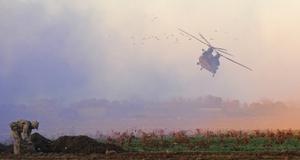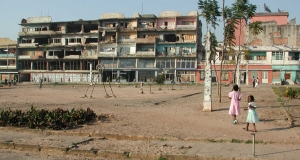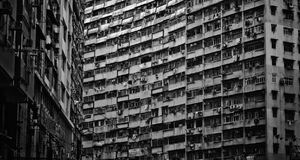Corruption and Graft in Post-Conflict AfghanistanSources of Corruption: War and Weak Accountability MechanismsPinpointing specific causes of corruption in Afghanistan is a challenging task, especially since Afghanistan suffers from corruption at all levels. Furthermore, identifying the direction of the causality might be difficult. Despite the difficulty in isolating specific sources, two causes in particular are important: post-conflict instability, and a lack of accountability. While other factors may have increased the likelihood of corruption in Afghanistan, such as high levels of foreign assistance, the former two are identified as root causes of corruption. While it is difficult to clearly identify causation, post-conflict situations are likely to be characterized by high levels of corruption. In addition to Afghanistan, post-conflict countries like Somalia, Sudan and Iraq have consistently ranked towards the bottom of Transparency International’s CPI. Even though the types of corruption vary across these countries, perceptions of corruption in conflict-ridden developing nations are on average significantly higher than their stable counterparts (U4: Lessons Learned in Fighting Corruption in Post-conflict Countries, 2012, 1-2). Despite engaging in counterinsurgency operations for over a decade, the Afghan government and international forces have yet to engender full peace and stability. The Taliban continues to engage the ANSF on multiple fronts at low-intensity levels, particularly in the southern Afghan province of Kandahar. The prolonged civil war in Afghanistan has strongly diminished the institutional capacity of the Afghan government and fostered corruption as a result. States in conflict are often heavily focused on fighting insurgents or foreign invaders (in the case of Afghanistan, the former) and thus fail to invest in developing governing institutions, like the judiciary and bureaucracy, and market-supporting institutions, like property rights and regulatory institutions. Post-conflict societies often lack governmental accountability and the ability to control, let alone properly govern, these areas (Working towards more effective donor responses to corruption , 2008, 20-25). Such countries also suffer from crumbling infrastructure further debilitating the government’s ability to deliver services to its citizens. During the conflict itself, corruption is used to cope with inefficient bureaucracies and profit from the war economy, and those structures often persist after the war (Working, 2008, 26-27).These structures include smuggling illicit arms and drugs, which results in a strong informal economy that breeds corruption ((Boucher, Durch, Middyette, Rose, & Terry, 2007). Because Afghanistan’s formal institutions are severely inept and lack any sort of legitimacy, rural Afghans also often rely on networks of regional and local power-holders to maintain order and provide basic services. The U.S. exacerbated this problem by initially supporting warlords and existing patronage networks in order to defeat the Taliban and Al Qaeda. Once legitimized, Warlords began using their positions to divert aid and Afghan governmental resources to themselves (“Operationalizing Counter/Anti-Corruption Study,” 2014). Finally, because the war-torn country diverted significant resources to the rebuilding effort, civil servants, judges and police officers became significantly underpaid. Bribe-taking became almost necessary for some to survive (Goodman and Sutton 2015). Further, minimal oversight has cultivated an environment that permits widespread graft, which members of the ANP, courts, and civil service have taken advantage of. Weak state institutions created by post-conflict democracies and nation-building lead to ineffective monitoring and judicial systems. The weak judicial system in Afghanistan, riddled with corruption itself, does not have the capacity to handle cases of corruption within the bureaucracy/police. A relatively new democracy, Afghanistan lacks the proper civil society involvement and strong media to effectively organize and mobilize Afghan citizens to fight corruption. Thus, instances of corruption at all levels go unchecked (“Fighting corruption in countries rebuilding after conflict,” 2008, pg. 2-9). To make matters worse, post-conflict countries like Afghanistan often receive billions of dollars in foreign aid but lack the capacity to implement it. This creates strong incentives for political elites, bureaucrats and security personnel to rent-seek, especially since aid programs often lack sufficient oversight (pg. 2-9). A recent analysis by the Joint and Coalition Operational Analysis, or (JCOA), determined that the international community’s failure to exercise sufficient oversight of its spending and place conditions on aid significantly compounded the problem of corruption (“Operationalizing Counter/Anti-Corruption Study,” 2014). Moving forward, methods of fighting corruption in Afghanistan must be contextualized with the causes of the country’s pervasive graft. No one solution can solve an issue that plagues Afghanistan at all levels of governance, nor will any swiftly remedy the problem. However, stronger governance structures and supervising entities will go a long way in reducing the problem that has beset Afghanistan for the past 15 years. Current Efforts to Combat CorruptionPrior to proposing specific solutions, critically analyzing Afghanistan’s current anti-corruption apparatuses and assessing their institutional quality will be necessary. Created by presidential decree in July 2008, the High Office of Oversight and Anti-Corruption (HOOAC) is tasked with coordinating and supervising the all anti-corruption efforts, including the implementation of the National Anti-Corruption Strategy (Zyck, 2012, pg. 10). The HOOAC has three core functions -- prevention, investigation and enforcement. However, HOOAC faces many roadblocks to implementing its strategy. PreventionThe HOAAC’s prevention department works with the Civil Service Commission and Ministry of Justice to “improve and develop an effective administrative system including simplification of the long bureaucratic procedures, review and amend the outdated laws and regulations,” (“Prevention Directorate,” 2012). It also suggests possible reform policies after assessing corruption vulnerability within certain sectors of government (“Prevention,” 2012). ComplaintsThe following is a diagram of HOAAC’s complaint process (Zyck, 2012, pg. 10):
The HOOAC’s website indicates that Afghan citizens can file a complaint by calling a telephone hotline, submitting a complaint through an online form, sending an email compliant, or participating in a face-to-face interview (“Prevention Directorate,” 2012). The HOOAC has a complaint department in every division of the government, each of which is integrated within the wider complaint network. The complaints department, in collaboration with other agencies, designs the processes and regulations for informant protection and reward (Zyck, 2012, pg. 11). Detection and EnforcementThe HOOAC primarily focuses on enacting preventative measures, and lacks legal authority to conduct investigations. Instead, the responsibility for bringing charges primarily rests with each governmental office (Zyck, 2012, pg. 12). Corruption cases are then referred to the Attorney General’s Office (AGO) for investigation, after which the HOOAC is tasked with following up with the investigation but takes no part in the adjudication (pg. 12). The HOOAC’s Strategic ChallengesThe HOOAC struggles in three core areas: communication, capacity, and enforcement. Having launched a countrywide TV and radio anti-corruption campaign, the anti-corruption agency has attempted to inform the people about the services its agency provides (Tariq, Ayoubi, and Haqbeen, 2011, pg. 103). Unfortunately, only 9% of Afghan homes own a computer and only one third of citizens understand basic governmental administrative procedures, making reporting bribes exceptionally difficult (pg. 104). A UNODC survey accredits this to “a lack of communication between the administration and its citizens,” (Corruption in Afghanistan: Bribery as Reported by the Victims, 2010, pg. 32). The HOOAC also lacks the requisite infrastructure to properly process the current levels of complaints, which “reinforces [Afghans’] belief that all government is corrupt and the system doesn’t work,” (Zyck, 2012, 13). A SIGAR audit revealed that the HOOAC was greatly understaffed, lacked experienced employees, suffered from in inadequate operational capacity and failed to meet international standards of independence from the rest of government as an oversight institution (Brummet, 2009, pg. ii). Furthermore, because the HOOAC fails to effectively coordinate with other government agencies, other offices do not trust its ability to handle corruption cases (Tariq, Ayoubi, and Haqbeen, 2011, pg. 104). Even when corruption cases are sent to the AGO, it is unclear whether or not the office prosecutes all of the cases they receive. The HOOAC lacks the administrative teeth to prosecute cases itself, which reduces its legitimacy as an institution and decreases citizens’ incentive to report cases of bribery. A corrupt judicial system fails to ensure that all corruption cases are properly tried, rendering the entire enforcement process largely ineffective. Any solution will require the HOOAC to have stronger enforcement mechanisms in order for any anti-corruption strategy to be successful.Continued on Next Page » Suggested Reading from Inquiries Journal
Inquiries Journal provides undergraduate and graduate students around the world a platform for the wide dissemination of academic work over a range of core disciplines. Representing the work of students from hundreds of institutions around the globe, Inquiries Journal's large database of academic articles is completely free. Learn more | Blog | Submit Latest in Political Science |



















